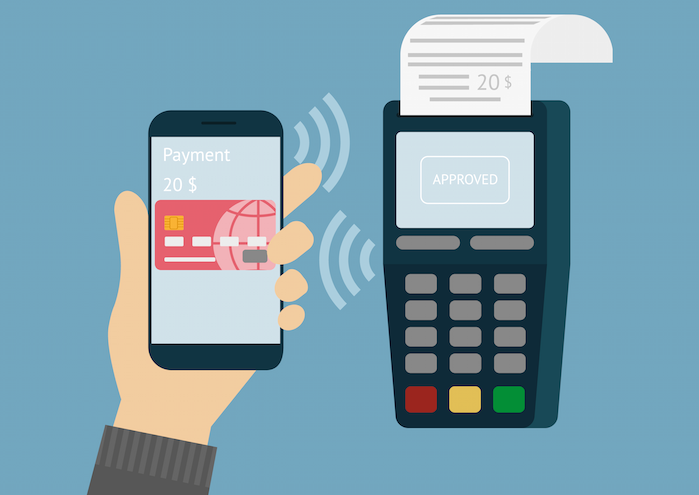https://www.youtube.com/watch?v=VLAtO7RgVM4
Just a few years ago bank card scanners were introduced, eliminating the pin-code function. Just a year ago phone scanning payment systems were introduced. Just a few months ago companies introduced face-scan payments. Although facial recognition is nothing new, its accuracy has only just become sufficient to secure financial transactions. The advancement of payment systems has been exponential over the past years, and is expected to only intensify in the future.
Chinese companies are currently using face-detecting systems to synchronize many daily tasks. These systems can be used to authorize payments, access facilities and even track down criminals, being described as beneficial for both surveillance and convenience.
Face payment systems are something so advanced for the most of us that I will take a minute to explain how it works. Chinese start-up Face ++ has already begun realizing this new payment opportunity. Through scanning one’s face, one gets placed in a database. The database allows over 83 points of one’s face to be tracked and analyzed simultaneously. In tracking this “unique” points on one’s face, the system can recognize a client in the database and access their accounts to authorize payments, access facilities and even track down criminals. (Knight, 2017) In order to avoid people tricking the technology they have also implemented a “liveness” algorithm to ensure that people are not using a photo or video of someone else. (Wang, 2017) The entire system works through users uploading their “live” faces into the database, integrating facial biometric data and tracking the 83 mentioned points from various angles. (Stray, 2017)
Face ++ technology’s popularity has been growing rapidly, with approximately 120 million people in China making use of the Face++ app to confirm their payments. (Stray, 2017) The company has already partnered with commercial banks such as Ant Financial and has already been incorporated into various apps in China, such as Alipay, in order to complete payments. (Knight, 2017) The popularity of face-payment systems has even spread to restaurant chains in China. Chinese high-tech versions of KFC, known as KPro, installed face-scanners earlier this month, being the first physical store in the world to use facial recognition software for processing payments (Wang, 2017). Deep learning and artificial intelligence techniques are employed for image recognition in order to increase identification reliability. (Knight, 2017)
The initial benefit of such facial recognition payments was to increase customer convenience, thereby enhancing customer experience. As these payments have become more abundant, their benefits have become more noticeable. Facial-recognition payments are believed to ease the customer experience as customers will no longer have to carry wallets or phones with them. Furthermore, the experience is believed to be more “personalized” as the payment systems can recognize who a customer is, how often they have been somewhere, and their ordering preferences. Facial-recognition payment software is being found to be beneficial not only for payments and convenience, but also for surveillance. Local governments in China are currently using the Face ++ technology to identify criminals from surveillance cameras. (Stray, 2017)
However, the risks associated with facial-recognition payments are the reason why these payments have not yet achieved success in Western countries. The main risk, which you may have already guessed, is the privacy issues at hand. Implementation of such a system which is reliant on a large database may be difficult in countries outside of China. China already has a large database of ID card photos of its inhabitants, which lowers the intensity of possible privacy issues, as inhabitants already have their information stored in a large, government controlled database. One’s personal data: finances, whereabouts, habits, frequently visited locations, etc. are all stored in a database. If this database were to be accessed by someone outside of the allocated authorities, then there could be a tremendous problem. Furthermore, everywhere one goes, their personal data shows up, how safe is this? People are often hesitant in sharing data, especially regarding financial data. In storing all of this data in one large database, there is a high risk of this ending up public.
Furthermore, it is believed that the integration of facial-recognition software into our daily activities will greatly transform everything from policing to the way people act everyday. (Knight, 2017) In making our day-to-day interactions more mechanical, will we soon lose normal social skills that we use when going to the grocery store, or the bank? It has been proven that people receive endorphins from social contact (Krach, 2010), where will we now receive these endorphins from? Will people turn into worlds of isolation?
Furthermore, if people become used to walking around without wallets, what will they do when faced with other situations in countries where privacy regulations are such that these payments are not possible, or not feasible? In India they are still struggling with mobile wallets, it will take decades before they are able to implement such a facial-recognition system. How will people go about having a “back-up” for when travelling to less advanced countries if they have gotten rid of all of their wallets?
Although facial-recognition is not a new concept, and facial-recognition payments sound convenient, there are many aspects which must be considered before implementing this system across more countries, especially across countries with more privacy limitations.
“We hope one day in the future people can go out without their cell phones or wallets” – Dong Liyun (Wang, 2017). What do you think, will this technology soon be implemented in Europe? How do you think the EU will deal with the aforementioned privacy issues? How do you think facial-recognition will change society?
References
Knight, W. (2017). In China, you can pay for goods just by showing your face. [online] MIT Technology Review. Available at: https://www.technologyreview.com/s/603494/10-breakthrough-technologies-2017-paying-with-your-face/ [Accessed 27 Sep. 2017].
Krach, S. (2010). The rewarding nature of social interactions. [online] Available at: https://www.ncbi.nlm.nih.gov/pmc/articles/PMC2889690/ [Accessed 27 Sep. 2017].
Stray, K. (2017). Paying With Your Face++. [online] Coin Telegraph. Available at: https://cointelegraph.com/news/paying-with-your-face [Accessed 27 Sep. 2017].
Wang, J. (2017). Pay with your face at this KFC restaurant in China. [online] CNNMoney. Available at: http://money.cnn.com/2017/09/01/technology/china-alipay-kfc-facial-recognition/index.html [Accessed 27 Sep. 2017].


